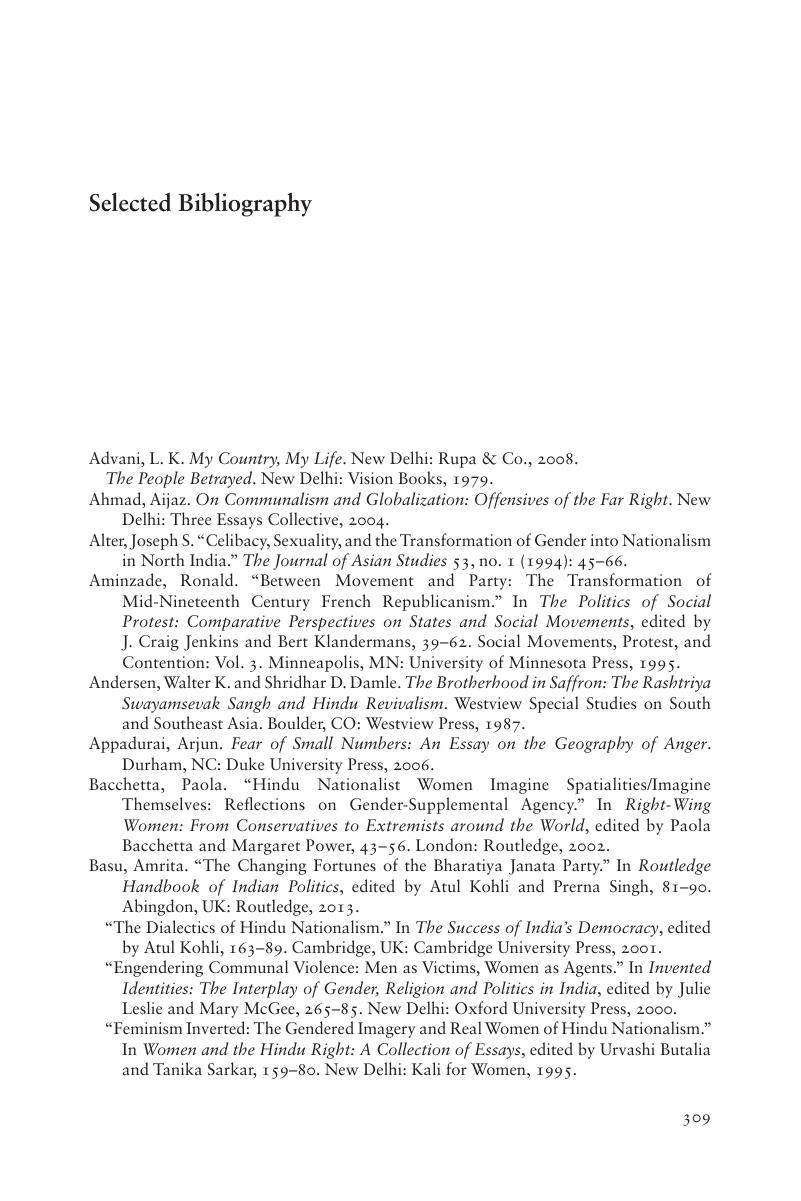Book contents
- Frontmatter
- Dedication
- Contents
- List of Figures and Tables
- Acknowledgments
- Glossary of Indian Words and Terms
- Indian Organizations, Institutions, and Political Parties
- Abbreviations of Political Parties and Organizations
- Introduction
- PART I THE PILLARS OF HINDU NATIONALISM
- PART II EXTENSIVE VIOLENCE
- PART III EPISODIC VIOLENCE
- Selected Bibliography
- Index
- Books in the Series (continued from page iii)
- References
Selected Bibliography
Published online by Cambridge University Press: 05 July 2015
- Frontmatter
- Dedication
- Contents
- List of Figures and Tables
- Acknowledgments
- Glossary of Indian Words and Terms
- Indian Organizations, Institutions, and Political Parties
- Abbreviations of Political Parties and Organizations
- Introduction
- PART I THE PILLARS OF HINDU NATIONALISM
- PART II EXTENSIVE VIOLENCE
- PART III EPISODIC VIOLENCE
- Selected Bibliography
- Index
- Books in the Series (continued from page iii)
- References
Summary

- Type
- Chapter
- Information
- Violent Conjunctures in Democratic India , pp. 309 - 320Publisher: Cambridge University PressPrint publication year: 2015



